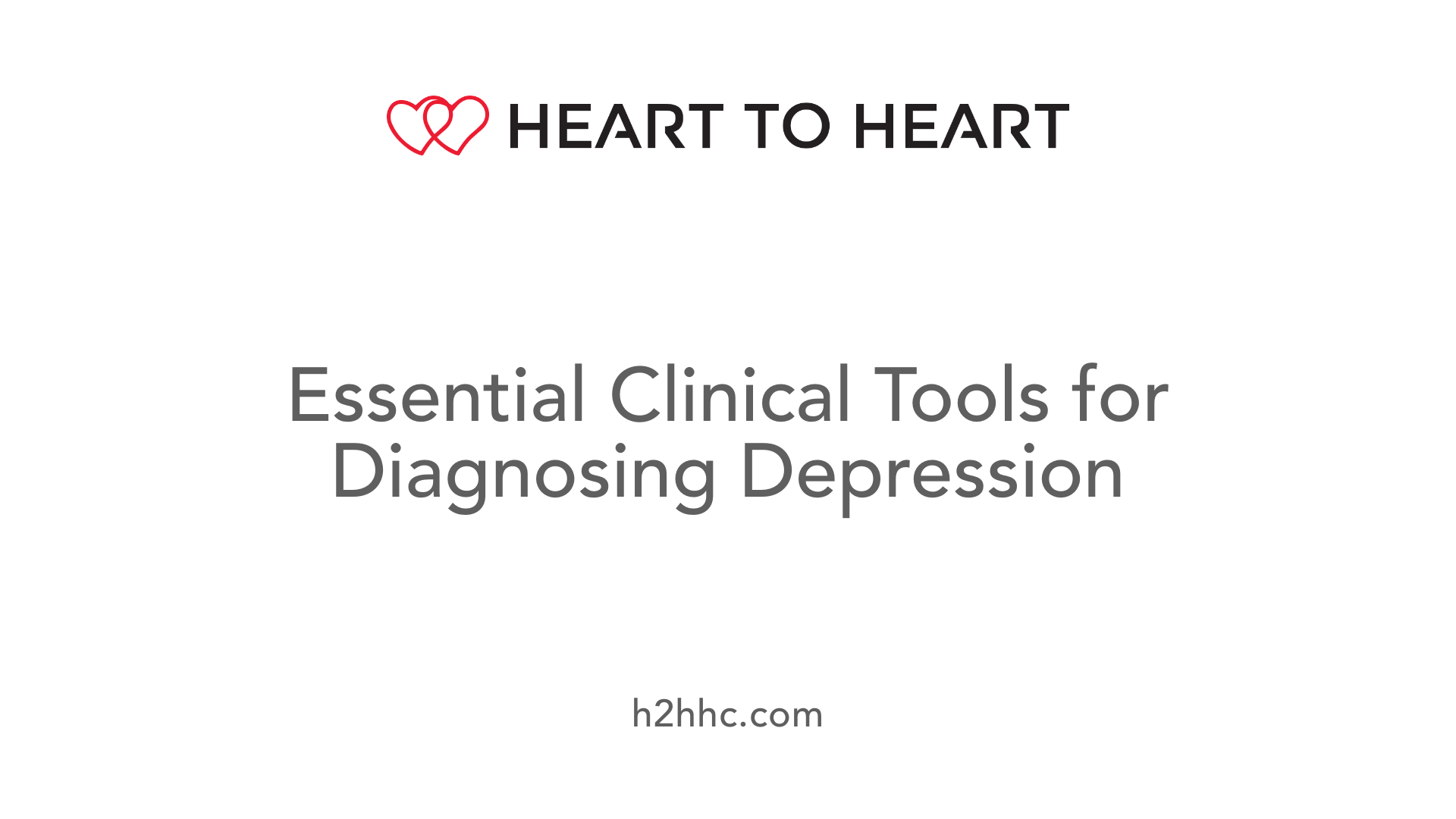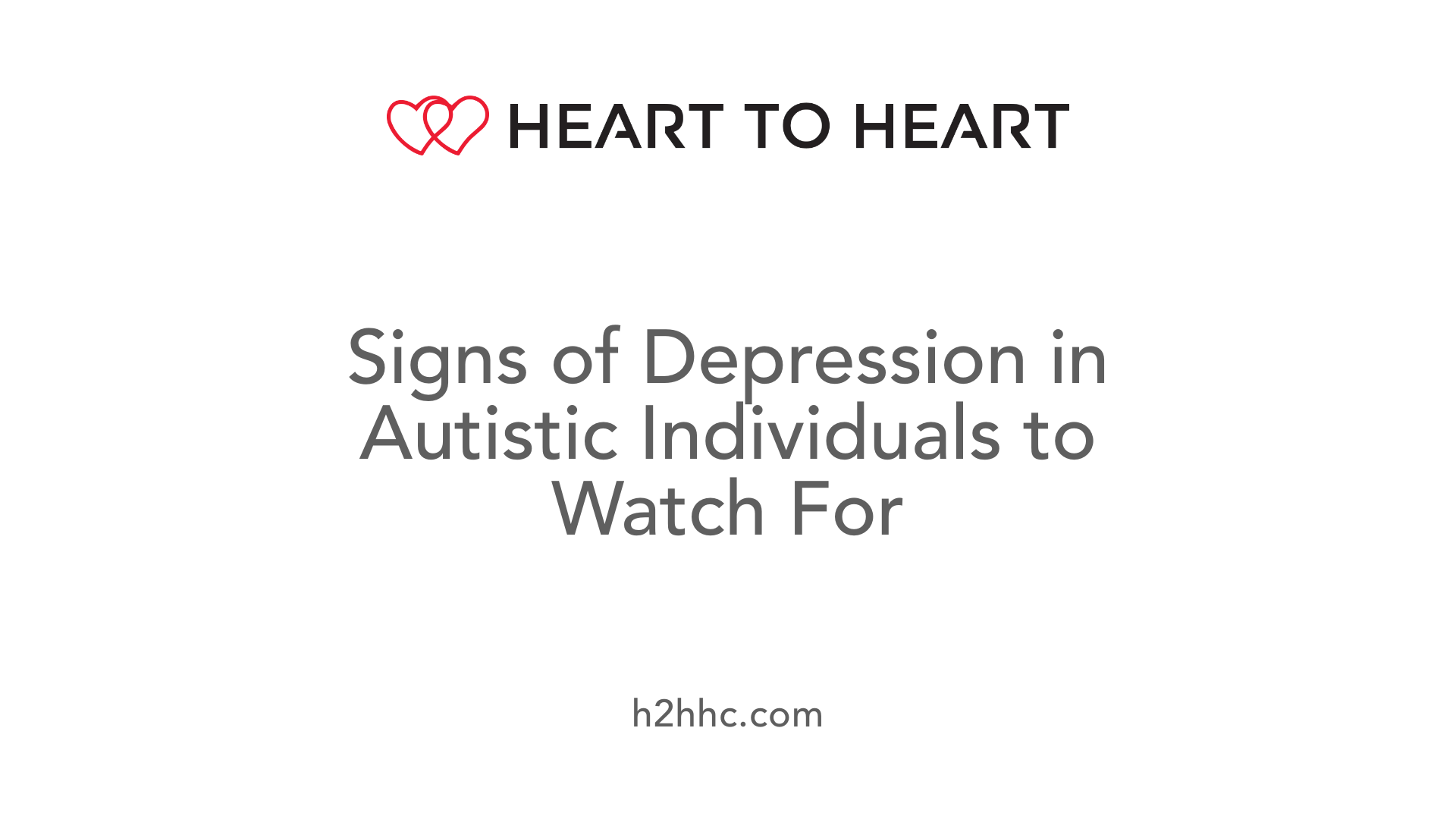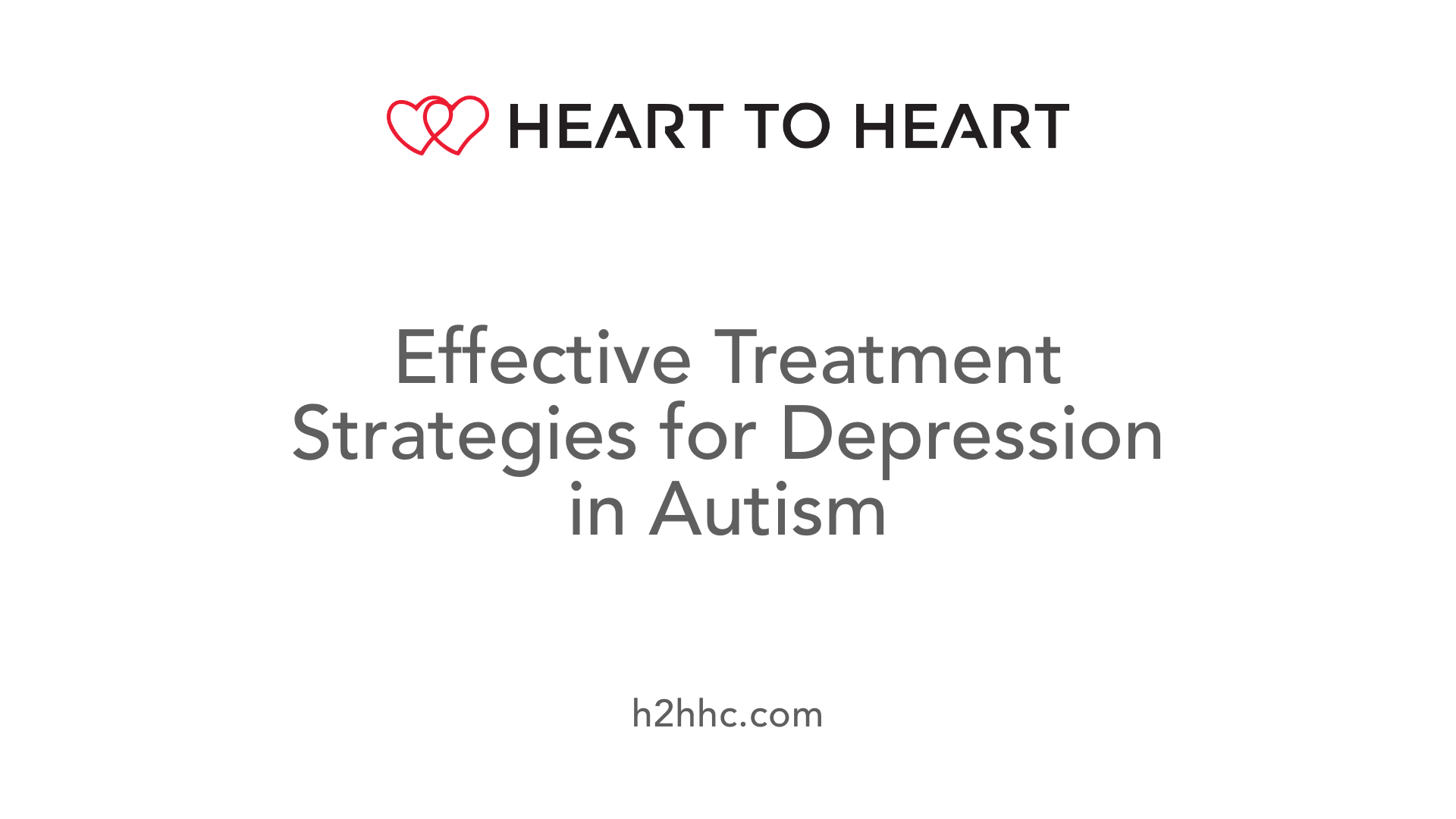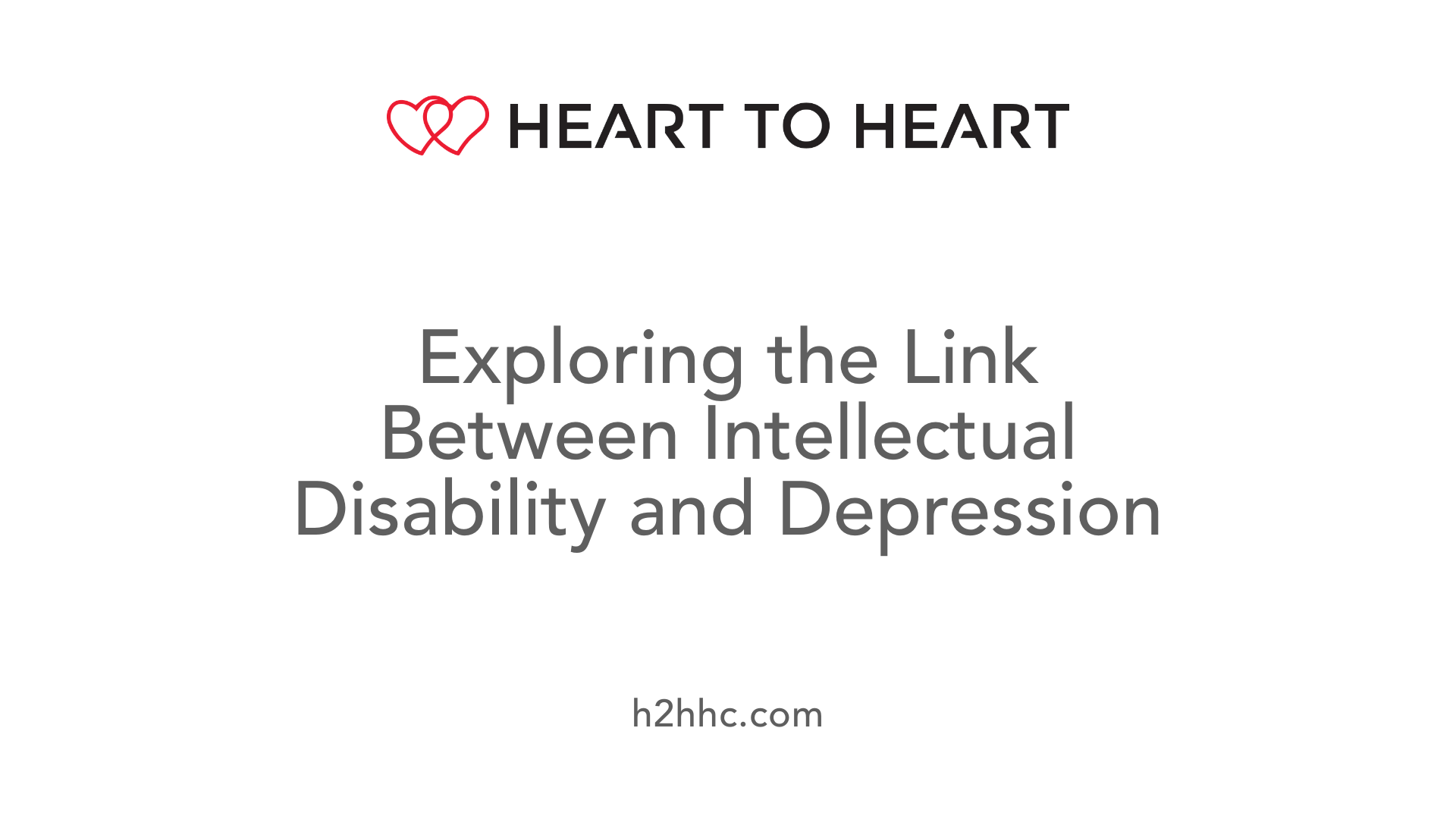Understanding and Addressing Depression in Disabled Populations
March 19, 2025

Depression is a complex mental health condition that manifests uniquely across different populations, including individuals with disabilities who encounter distinctive challenges. For those navigating life with physical, intellectual, or developmental disabilities, the risk and presentation of depressive disorders can deviate significantly from the general population, necessitating a tailored approach to diagnosis and treatment. This article seeks to illuminate the signs of depression in disabled individuals, emphasizing the importance of early detection and comprehensive care.

General risk factors for depression encompass a variety of elements that make individuals more vulnerable.
Individuals with disabilities face unique challenges that increase their risk for depression:
This confluence of factors illustrates the critical need for tailored intervention strategies focusing on the mental health of individuals with disabilities.

Clinical assessments play a crucial role in identifying depression in individuals by utilizing standardized tools to evaluate symptoms and severity. Various instruments help facilitate accurate diagnosis and effective treatment planning.
Key tools used for screening depression include:
Regular assessments are essential not only for diagnosing depression but also for guiding treatment decisions and monitoring patient progress over time.
Diagnosing depression in individuals with disabilities requires a tailored approach due to their unique challenges and potential communication barriers. Standardized psychological evaluation tools used in the general population often need adaptation in this context.
For instance, accommodating specific needs of individuals with learning disabilities or cognitive impairments is essential. Clinicians may prioritize the use of visual aids or simplified language during assessments. Furthermore, family or caregiver input can provide valuable insights on behavioral changes and emotional states that may not be readily communicated.
In practice, the utilization of tools like the PHQ-9 has been shown to be effective; about 70-80% of studies employ this method for assessing depression within the context of disabilities. By ensuring assessments consider individual circumstances, healthcare professionals can more accurately identify and address depression among diverse disability populations.

Typical signs of depression in individuals with autism can include persistent sadness, tearfulness, and apathy. Behavioral changes such as increased self-injurious behavior and significant weight fluctuations may also be present.
Autistic individuals might exhibit diminished interest in previously enjoyed activities and feelings of worthlessness, further complicating the picture due to communication challenges. Symptoms like irritability, social withdrawal, and neglecting self-care practices are common as well.
Persistent feelings of guilt or hopelessness may arise, alongside thoughts of death or suicide, which are crucial signs for caregivers to monitor.
Given the higher prevalence of depression in autistic individuals, vigilant observation by caregivers and professionals is essential for early identification and intervention. Understanding these unique manifestations of depression allows for tailored approaches to treatment and support.

Treatment options for depression in autistic individuals focus on both medication and psychotherapy. One common class of medications used is Selective Serotonin Reuptake Inhibitors (SSRIs). These are generally considered effective and relatively safe, yet they may present specific side effects, particularly in children and teenagers.
Cognitive Behavioral Therapy (CBT) has also been adapted for autistic individuals, emphasizing improved mood and better coping strategies. Studies report varying degrees of effectiveness, showing promise but also highlighting the need for tailored approaches given the unique presentation of depression in this population.
Mindfulness-based therapy is another emerging treatment with preliminary evidence suggesting its effectiveness in alleviating depressive symptoms, especially among autistic adults. The challenge lies in accurately identifying symptoms of depression in autistic individuals, as they can manifest differently than in the general population, which risks under-diagnosis or misdiagnosis.
In conclusion, a combined approach that incorporates both medication and psychotherapy may yield the best outcomes, facilitating the necessary support for autistic individuals experiencing depression. Continued research will further refine these treatment strategies to ensure effective and individualized care.

Intellectual disability and depression refer to the co-occurrence of cognitive limitations and mental health challenges. This dual diagnosis is more prevalent among individuals with intellectual disabilities, with studies suggesting that approximately 30% to 35% of this population may experience a psychiatric disorder, including depression. Understanding this link is crucial, as the symptoms of depression in individuals with intellectual disabilities can often present atypically due to communication challenges.
Common symptoms of depression within this group may include social withdrawal, persistently low mood, and changes in appetite. These symptoms can often be misattributed to the intellectual disability itself, complicating diagnosis and treatment.
Unique challenges such as difficulties in communication and behavioral cues may lead healthcare providers to overlook critical signs of depression. Thus, effective treatment strategies, especially cognitive behavioral therapy, are essential and should be adapted to meet the specific needs of individuals with intellectual disabilities. Tailored interventions are vital to ensure that these individuals receive the support they need to thrive mentally and emotionally.
Recognizing depression in individuals with learning disabilities can be particularly challenging. Signs may include persistent feelings of sadness, increased exhaustion, and changes in appetite—either a significant loss or an unexpected increase. Changes in sleep patterns, such as insomnia or excessive sleeping, can also signify that something is amiss.
Additionally, individuals may lose interest in activities they once enjoyed, displaying a noticeable decline in engagement. Increased irritability and anxiety can be prevalent, along with observable behavioral changes, including loss of previously mastered skills or increased challenging behaviors. It's crucial to differentiate between depression and other mental health issues like bipolar disorder or anxiety, as these can co-occur and complicate the diagnosis.
Early recognition of symptoms is essential. Parents and caregivers should engage in open, supportive communication, encouraging individuals to share their feelings. Seeking professional help allows for a thorough evaluation and a tailored treatment plan, which may include psychotherapy techniques such as Cognitive Behavioral Therapy (CBT) or medications to manage symptoms effectively.
By fostering a supportive environment and facilitating access to appropriate interventions, individuals with learning disabilities can navigate their depression with the right assistance, enhancing their overall quality of life.
The connection between physical disabilities and depression is profound and well-documented. Individuals experiencing physical disabilities often have depression rates that are 2 to 10 times higher than those without disabilities. This heightened vulnerability can be attributed to various factors, including social isolation, accessibility issues, and societal discrimination, often referred to as ableism.
Women with disabilities are particularly affected, frequently reporting more intense depressive symptoms compared to their male counterparts. Importantly, the relationship between physical disabilities and depression is bidirectional; not only can physical disabilities lead to increased depressive symptoms, but depression can also create functional limitations that complicate daily living.
Effective interventions to address depression among individuals with physical disabilities include therapies such as cognitive behavioral therapy, which has proven beneficial in reducing the severity of depression. Additionally, increasing social support is vital. Building robust connections with family, friends, and community resources can help reduce feelings of isolation.
To further explore the complexity of this issue, studies highlight the role of tailored interventions that target the specific needs and challenges unique to individuals with disabilities. These may involve flexible therapies that consider access barriers, ensuring effective mental health support for all.
Recognizing depression in individuals with disabilities requires a keen understanding of the unique manifestations and challenges present within this community. By employing comprehensive assessment strategies and tailoring treatments to the specific needs of each individual, healthcare providers can offer significant relief and improved quality of life. Engaging with the available resources, supporting early interventions, and advocating for systemic changes are critical actions that can alleviate the burden of depression on disabled populations. Ultimately, a collaborative effort between caregivers, healthcare providers, and the individuals themselves is necessary to foster an environment where mental health can thrive despite the adversities faced by disabled individuals.
09:00 AM - 06:00 PM
Monday - Friday
2488 Grand Concourse Suite 409, Bronx, NY, 10458
T: 718-305-5858
F: 718-305-6258
1 Smith Street, 3rd Floor, Brooklyn, New York, 11201
T: 718-305-5959
F: 718-305-6259
2361 Nostrand Ave Suite 401 Brooklyn, NY 11210.
T: 718-305-6060
F: 718-305-6260
576 Central Ave # 301, East Orange, NJ 07018
433 Woodbury Glassboro Road Sewell, NJ 08080
1172 Fischer Blvd, Toms River, NJ 08753
T: (973) 678-5500
njinfo@h2hhc.com








